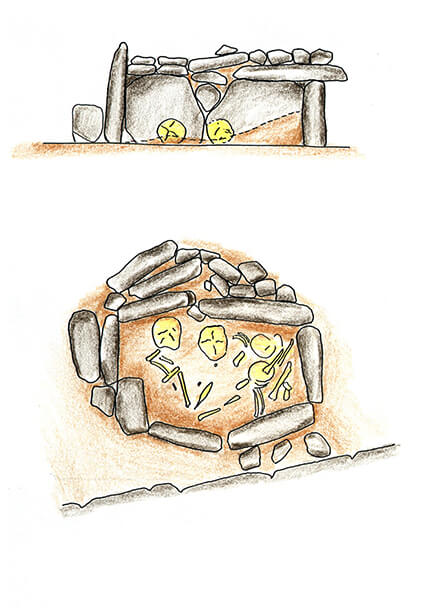If we say that the Urartians are most known for their graves and grave finds, we have not made a false assumption. The source of Urartian finds, which are exhibited in many museums of the world today, are mostly composed of artifacts of Urartu graves that have been stripped as a result of illicit excavations. This brutal pillage through illicit excavations is unfortunately still continuing. When we add the production and sale of fake artifacts to this case, it is not very healthy for many scientists to be able to make an Urartian cultural definition from these Urartu artifacts, whose reliability and location of finds are suspicious and came to museums and private collections. Written documents about death and death ceremonies in Urartu do not provide much information. Information on such issues is mostly obtained from archaeological excavations. Cairn type graves with its chronologies dating back to the Late Bronze Age and the beginning of the 2nd millennium BC were formed by covering a burial area of stone type with stone or soil pile in Eastern Anatolia. The most characteristic dead gift in the graves where a single individual is buried in the position of hocker (knees in the abdomen) is paint decorated pottery. In Urartu period, it is understood that there is a differentiation in grave typology and burial tradition. This change has been valid for all Anatolia starting from the 1st millennium BC and has been linked to the social or socio-economic status of the buried people or persons. A wide variety of burials and graves from simple soil graves to more monumental rock graves, from chamber graves to stone chest graves and urne graves began to emerge in the geographies that were influential with the Urartian culture.
Urartu Rock Graves
It can be said that the rock grave tradition in Urartu developed as a natural result of rock processing potential. But then it shows specific, independent development. These structures, which usually have an organic link with the citadel part and are built in the bulwark, are located in front of the rock platforms. The main hall with a single-wing door and the arrangement in the form of smaller burial chambers opening into this hall reflect a general understanding of plan. The Van Castle rock graves, which we will discuss in more detail below, carry the basic references for the Urartian royal grave typology. I. Argişti Grave is a remarkable example because it is the only grave that can be dated with the inscription on it. For the other graves, chronological predictions were made based on the location of the grave, plan understanding and style critique. For example, the New Palace has taken this name because I. Argişti Grave is under it. The founders and the Neft Well graves were placed on an earlier historical process because of the Old Palace rising above them. Front understanding in the examples of the main hall, the arrangement of the side rooms opening to the main hall, the East rooms in the Van Castle and the Neft Kuyu Grave show that they reflect a house and even a palace architecture. Examples such as Varto/Kayalıdere, Palu, Mazgirt/Kaleköy, Tatvan, Doğubeyazıt, Ağrı/Atabindi, Pasinler Castle except from Van Castle are other rock grave that we can date to the Urartu period with their architectural features, locations and interior layout outside the central region of Urartu. In northwestern Iran, samples such as Sharik and Sangar were found to meet the criteria of Urartu rock grave with multi-chamber. The multi-chambered rock graves located outside the capital Tuşpa should probably belong to local administrators or princes emulating Urartu. However, as we have noted before, no finds are found in any of these graves and this make this assestment only an assumption. Because we do not have any resources other than the style critique of the chronologies of the burial chambers. When the burial chambers in the Van Lake Basin which have been found in many surface exploration in recent years with a dead bed, mostly one-room, made to hard-to-reach areas and can be reached by a narrow door are evaluated with plan and location characteristics, it is seen that they do not comply with the characteristics of Urartian rock grave which we have outlined above. The Small Horhor Grave, the Arsenal Grave and the small grave below the Great Platform are important examples in terms of reflecting this distinction. It is seen that they reflect a quite different tradition with their plan and dimensions from the examples of royal graves in the Van Castle. It is possible that this small size, one-chamber graves with large niches opening into the chamber. belong to post-Urartu period; possible to Achaemenid/Persian, Hellenistic or Roman periods.
Underground Chamber Graves
The chamber graves built in underground are the most common form of graves in Urartu. Under the names of underground stone mesh graves and underground rock graves can be evaluated in two main groups. There are many examples that shows different applications under these main headings. Many underground chamber graves were uncovered in the archaeological excavations carried out in the centers such as Karagündüz, Dilkaya, Ernis-Evditepe, Adilcevaz, Yoncatepe, Van/Altıntepe in Van Lake Basin.
Underground Stone Mesh Graves
The chamber graves with mesh stone walls under the ground consist of a main burial chamber and a generally well shaped dromomos providing access to this area from the soil surface. Some examples may also have smaller alternative burial chambers or areas. The technique of trapping namely the stone sticks out inward as the wall rises, so that the area to be covered in the upper point can be further narrowed. The narrowed ceiling part can be covered with flat stone plates placed parallel to each other. Some of the long-rectangular burial chambers have a length of 6 meters. Their width varies between 1.5-2 meters and their height varies between 1.5-2.5 meters. mostly more than one burial was made to burial chambers in Urartu. Graves with more than 100 burials were found in archaeological excavations. The dead were placed in the hocker position in the grave. A system with multiple burials has been developed a system with continuous access in terms of grave architecture. The connection with the surface is usually provided by a stone mesh or by a well-shaped dromos which is directly drilled into the ground. In some of the burial chambers, alternative burial areas have been formed. The presence of a second or third burial site connected to the burial chamber was found in the Karagündüz and Yoncatepe graves. As the new dead laid to the burial chamber, As the burial chamber was built with new burials, the skulls and finds from the old burials were also collected to these areas. Some special applications are noteworthy. For example, in the Van-Yoncatepe 3 grave, the skulls were preserved in the same areas and in containers. In the grave of Karagündüz ‘K 10’, approximately ten skulls were placed in a cavity opening to the bottom of the burial chamber. This multi-chamber plan concept in the underground graves can be considered as small-scale reflections of the Urartian rock graves. In the chamber graves, cremation burials were found alongside normal burials. The presence of cremation burials and normal burials together in the burial chambers used by the people suggests that individuals from different traditions or cultural backgrounds may be buried in the same burial chambers. In addition, the social status, sex of the person, epidemic diseases may have determined the shape of the burial. However, there are no archaeological findings to determine this distinction. The pottery found in the burial chambers are the containers where dead food and drink are put. Most of the decedent were buried with personal ornaments or gifts. As is also understood from the burials that some of them were determined as in-situ in grave chambers, iron bracelets or anklets, iron or bronze dress/ornamental needles, iron and bronze rings, beads necklaces from various stones and the knives were put into the burial chamber with the burial. The dog burials found in the Yoncatepe graves reflect a remarkable burial tradition of the Urartians. In here, dog burials were also identified together with human burials. However, only the example in the’M5’grave was found as in-situ. The chronology of the stone mesh chamber graves encountered in the countryside, which we have tried to define in general terms and which are not connected with more royal cities, is quite controversial. Underground mesh graves such as Karagündüz, Dilkaya and Yoncatepe were dated to the Early Iron Age by looking at grooved pottery in graves. But, when the find groups that were emerged in the graves in this necropolis, are evaluated as a whole, some problems in chronology attract attention. With grooved material, the presence of Urartian pottery with red slip, Urartu ornamental needles and fibulas which can not be withdrawn earlier than the 8th century BC, brought the problem of dating with it. When the material group and the finds situation are evaluated as a whole; it has been demonstrated by us that at least the necropolis areas such as Karagündüz, Dilkaya and Yoncatepe should be dated to the Middle Iron Age.
Underground Carved Graves
In addition to underground stone mesh graves, the burial chamber carved into the main rock under the ground is also common in Urartu. This type of graves were made especially in the areas where the rock types are very easy to process. The most comprehensive information about Urartian underground carved graves comes from Van/Altintepe and Kalecik necropolises. Adilcevaz, Patnos-Dedeli and Patnos-Yukarı Göçmez underground carved graves which were excavated with a team under the direction of Baki Öğün in 1970s, are significant with in-situ finds. Adilcevaz grave is reached through a well-shaped dromos. The grave chamber, which measures approximately 2.55x1.68 centimeters, is approximately 1 meter below the dromos base. Therefore, the burial chamber is reached by step. On the eastern wall of the burial chamber, a niche with a height of 1.15 meters, a depth of 0.37 meters and a height of 0.70 meters was opened. The in-situ urnes within the niche provide important information about the function of the niches, confirming that these areas are areas where urnes and dead gifts are put. The other finds and the skeletons were stacked at the bottom of the burial chamber as in the Karagündüz, Yoncatepe samples. Terracotta cruse and jugs, bronze bracelets and needles, gold fibula and wooden furniture components amont the finds are remarkable. Dedeli and Yukarı Göçmez graves excavated in Patnos are different with its carved ceilings in the shape of barrel vault. A terrace extends at a depth of 0.50 centimeters and a height of about 25 centimeters among the walls of carved Yukarı Göçmez grave carved in rectangular form approx. 4.92x3.87 meters size. In addition, each niche is opened to the two long walls of burial chamber and the walls opposite the entrance. Yukarı Göçmez grave show great parallellism with Kalecik and Altıntepe graves especially with its internal arrangement. The dromos which go down about 2.40 meters from Dedeli grave surface is remarkable. The burial chamber is reached through an opening about 95 centimeters long from the base of the dromos. This burial chamber, 2.50x1.80 meters in size, is also roughly rectangular. In the western wall of the bırial chamberi there is a niche with 70 centimeters wide, 65 centimeters high and 70 centimeters deep. Again, a smaller niche was opened in the north wall, with 45 cm wide, 45 cm high and 38 cm deep. Many finds were found out in this in situ chamber. As we mentioned before, the locations of the underground burial chambers and the finds from their inside indicate that they was used until the fall of the kingdom from Middle Iron Age. Kalecik, Adilcevaz, Dedeli and Yuksel Migrant graves are attracted by one-chamber arrangements. In Altıntepe graves, it is understood that mostly multi-chamber graves are preferred. However, this situation does not indicate a chronological difference at the point of finds. Some examples of the gravess in the Van/Altıntepe, which was sometimes introduced as a capital necropolis and Kalecik Necropolis reflect miniature examples of royal graves in many aspects. The understanding of multi-chamber plans and the arrangement of niches are the clearest evidence of this similarity.
Stone Chest Graves
Another type of grave is the stone chest graves which was used in at least the Early Bronze Age in Eastern Anatolia and was seen in Urartian. These kinds of graves were found during the excavations carried out in the necropoles of Yoncatepe, Dilkaya and Karagündüz. However, it is a type of grave which is not much preferred by Urartu compared to other grave types. With the flat stone blocks placed vertically, a type of grave was formed in the form of a chest, mostly in square or rectangular plan. The top cover was made by placing flagstones, placed vertically to one or two flat stones depending on the size, as the cover on it. Despite the grave in which one person was buried in Yoncatepe, there is a large-scale example of stone crate type in which seven burials were made in Dilkaya. In the Karagündüz Necropolis, it was found that the multiple burials were made in the M2 grave, which was close to the grave understanding with its dimensions and number of burials, but which reflects the type of stone crate with its architectural structure.
Simple Soil Graves
The graves, where the dead were placed directly into the pit, are defined as simple soil graves. The burial is usually made in hocker form. In addition to the examples where a single individual was buried, simple soil graves were found in which more than one person was buried in the same area. This shows that the multi-burial concept in the chamber graves has also been applied in simple soil graves. It was observed that burial gifts and dead dishes were placed in simple soil burials. A significant difference in the quality of the items left as a gift of the dead will not stand out compared to chamber graves. At this point, it seems difficult to associate simple soil burial with the socio-economic status of the person.
Urnes
Urne is a term used to describe flat-bottomed or round-bottomed vessels with short necks, bulging belly, made of bronze or mostly terracotta, where the remains of the dead (ash, bone) are placed after cremation/burning. Urnes were placed in rock graves, niches opening to the walls of chamber graves, natural rock cavities, cavities and canals that are opened to the soil or rock. The mouths of the vessels are generally covered by putting spheral pot reverse. In some examples, the vessel sorrounding is supported by small stones. In addition to those alone, there are also groups formed by placing more than one urne next to each other. Considering the number of cavities in the Cremation Grave in Van Rock, it is seen that a large number of urne burials can be collected in the same area. There are usually three holes on the shoulder parts of the urne. There are single, double and five-hole samples. Numerous Urne burials in the Urartian necropolis and centers such as Iğdır/Melekli, Adilcevaz, Patnos/Dedeli, Liç, Van/Altıntepe, Van Kalesi Höyüğü, Habibuşağı and Dilkaya were uncovered in-situ. The burial gifts placed in or around the Urns do not differ significantly with the grave gifts we have seen in other Urartian grave types. Ornamental needles, iron knives and wedges, bronze bracelet earrings and rings and bead necklaces are the most common gifts. Some examples include swords, bronze belts and bronze vessels.
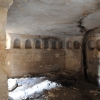
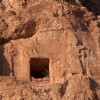
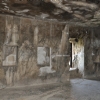
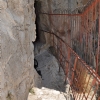
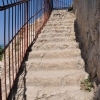
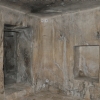
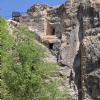
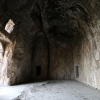
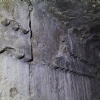
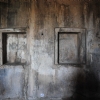
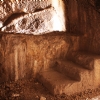
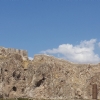
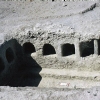
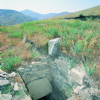
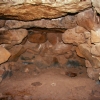
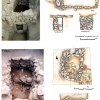
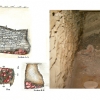
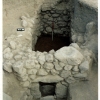
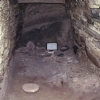
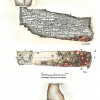
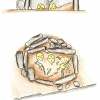
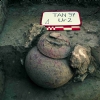
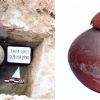
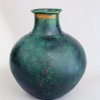
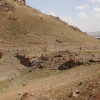

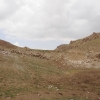
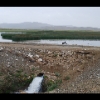
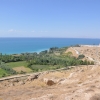
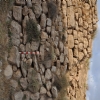
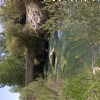
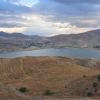
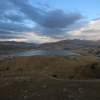
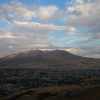
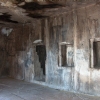
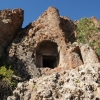
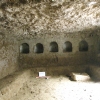
MEZAR ARMAĞANLARI
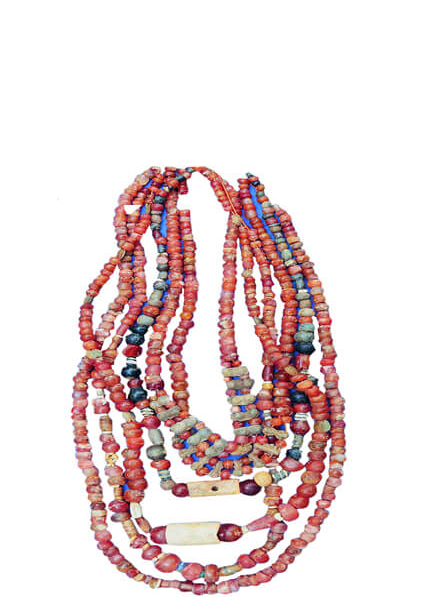
DİLKAYA NEKROPOLÜ 1 NOLU TAŞ SANDIK MEZAR
